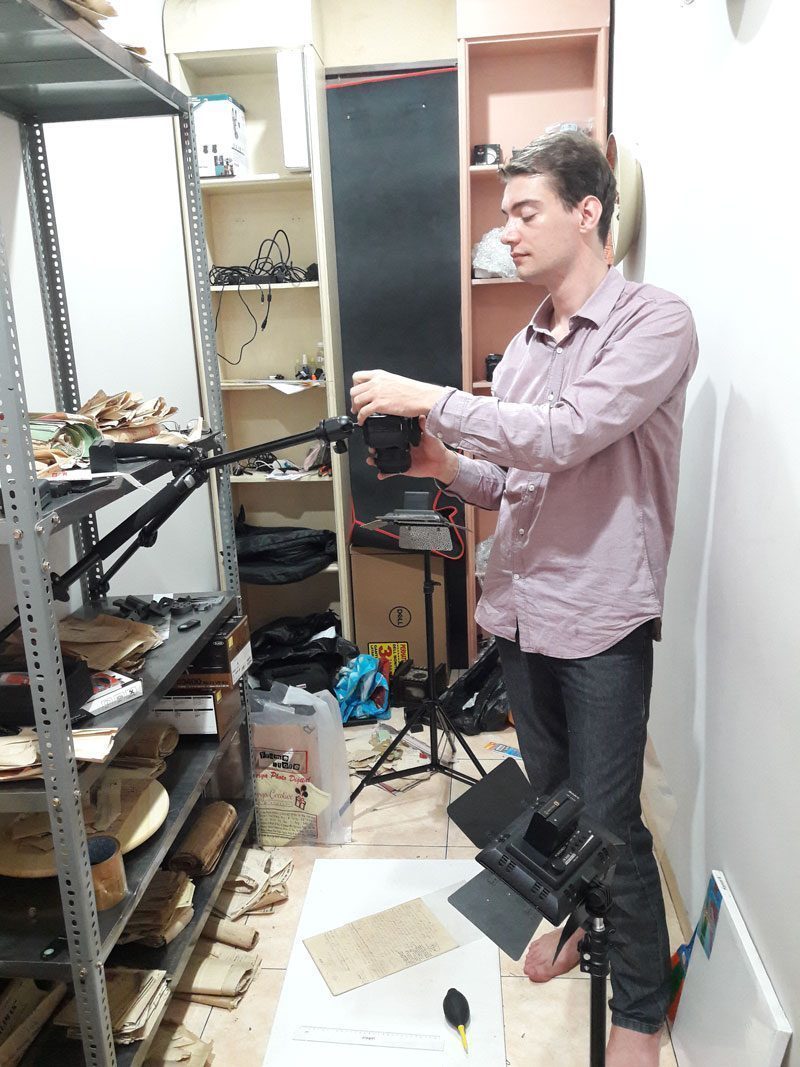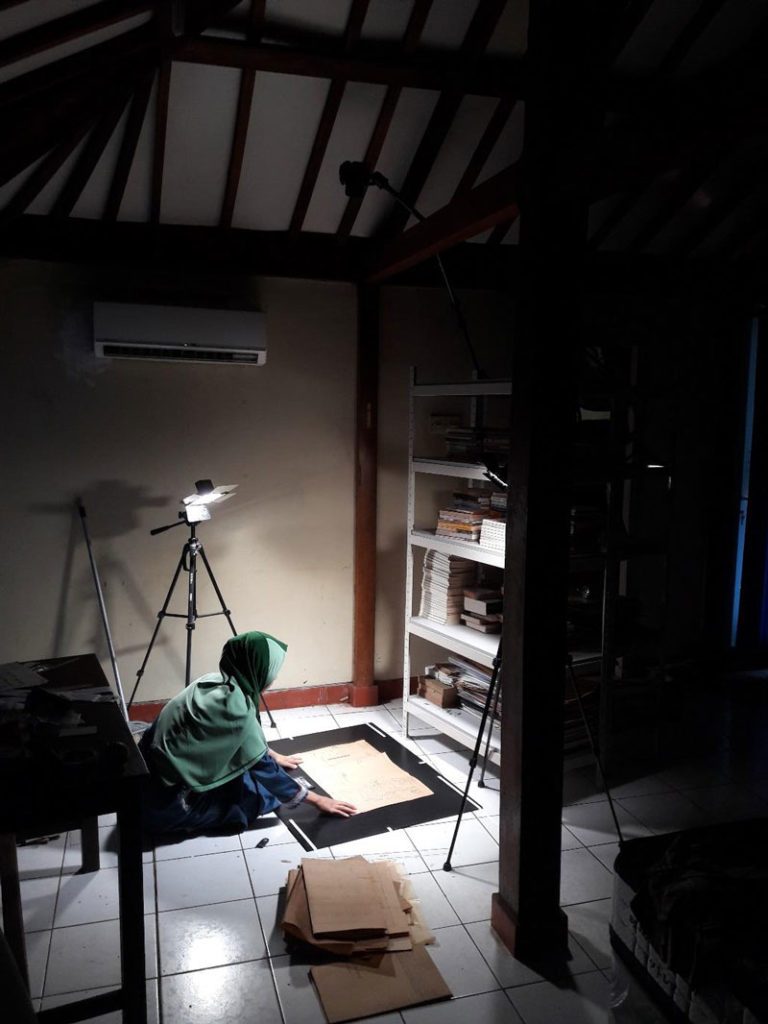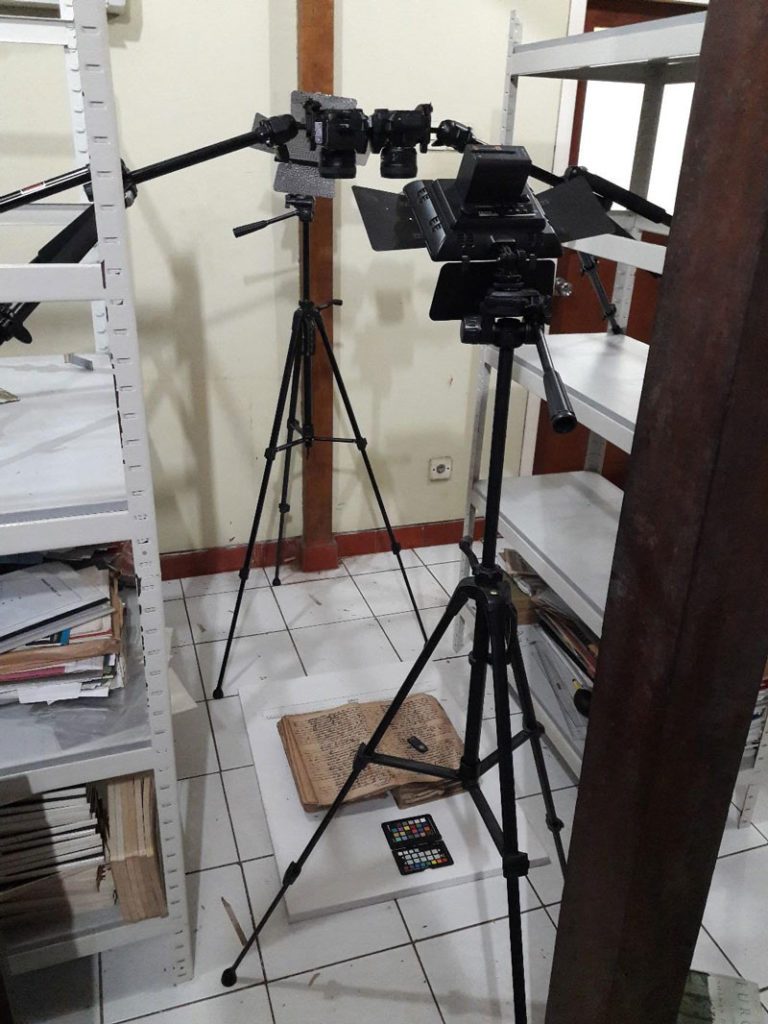Simon C. Kemper

Doing historical research in Indonesia requires a sense of what can and cannot be found in public archives. Acquisition and bequeathals are limited in the archipelago whereas the disposal and removal of publicly available documents remain common.
Our endeavour laid eyes on particular collections that vanished altogether in the aftermath of the political turmoil – or Reformasi – of 1998. These are the notarial archives dating from the Nineteenth and Twentieth Century, in particular those relating to the cities of Surabaya, Gresik, Batavia, Yogyakarta and Surakarta. Lack of space as well as financial gains from selling the material pushed the municipal archives to dispose of these important sources, thereby leaving a hole in the history of colonial towns and urban developments. During the last two decades, these bundles of paper spread through Java as souvenirs and curiosa which were primarily evaluated on their stamps and not the information they contained. After hearing of this loss in 2015, we pursued these sources among private collectors and managed to trace thousands of pages.
Especially collectors residing in economic centres like Surabaya and Jakarta as well as antique dealers in tourist destinations like Yogyakarta and Bandung were well provided. While fortunate to have found their whereabouts, we still dealt with the tip of the iceberg. Moreover, the condition of the material clearly showed us urgent steps were needed to preserve the material, be it in paper or digital form. The inability to get these sources into public archives made us opt for the latter, and hence a proposal was written to obtain financial support for this attempt at preserving a vital piece of colonial history.
The Marinus Plantema Foundation proved willing to sponsor our digitization and thereby ensured the notarial archives remained extant and accessible for researchers all over the world. Moreover, an extension of the program disclosed a second archive on the colonial trade of building materials from the vantage point of a Chinese entrepreneur based in Surakarta. The Foundation’s funds allowed us to recover over 60.000 pages -40.000 of which could be inventoried and digitized- of relevant material and additional sources like Javanese manuscripts, lost VOC letters and documents from the Daendels era. The latter will, however, need to await further attempts at digitization. For this project, our objective remained the preservation the notary records and the compilation of information on colonial real estate that these records contained. Still, the abundance of differently themed albeit equally important sources found on the way shows similar initiatives can be rewarding too.
As such, the Marinus Plantema Foundation is one of the first organisations to have recognized the importance of these private collection as well as one of the first to apply digitization to bypass conflicts of ownership and offer the sources to both Dutch and Indonesian researchers. The Foundation thereby ensured gains for all partners and parties involved.

The set-up for photographing larger maps.
The notarial documents primarily deal with real estate and construction. Unlike other available sources on this topic, the contained a grass-root view on the issues of heritage, mortgages and land purchase. Interestingly, this view also incorporated the non-European higher-, middle- and sometimes even lower class. Javanese, Chinese, and Arab estate owner all duly recorded their property and their partitions for sublet, even when notes and scribbles in the documents make clear their understanding of the administration and the Dutch language sometimes required middlemen for translations and legal advice. Due to this multitude of different agents involved, these documents redefine what land and house ownerships in the East Indies entailed. In addition, we also traced a sizeable archive belonging to a Chinese-Indonesian trader of building material dating from the 1930s.
This archive too allowed us to reconfigure the nature of colonial infrastructure and buildings through studies on the delivery of matters ranging from cement, bricks, tiles, paint, glass and the like. The numerous collections under concern were thus dealing with a single research interest, that is the colonial real estate and construction market. This realization encouraged us to seek support from the Delft University Library, who hosts a website on this topic; www.colonialarchitecture.eu. The historian of colonial architecture Pauline van Roosmalen had initiated the website years ago, but unfortunately it lost momentum since. Hence a mutually beneficial solution emerged. Uploading the digitized sources to the website allowed use to give access to the material whereas the Delft University Library could revive its platform with a new series of documents. We gained great support from the IT- team there, in particular Paul Suijker and Arent Bosman, who programmed a specific section on the website for these sources.
From the other side of the world, Indonesian researchers at the University of Gadjah Mada and the Indonesian Center for Architecture Documentation (PDA) declared interest in researching the sources and since then have presented and written on issues like the early twentieth century transition of indigenous land rights, the maintenance of colonial heritage and the prominence as well as prosperity of Chinese and Arab land-owners. Importantly, they also helped us in creating a large database from these sources which elaborates on the ownership, location, value and design of buildings. This database is presented as metadata on the website but can also be downloaded as an excel sheet. The cooperation between these institutions has propelled our efforts greatly and will hopefully remain intact for future research projects based on this initial digitalization. Such projects would include the creation and analysis of 3D models of European as well as non-European colonial buildings to connect their architecture to trends in land ownership as well a building material. For the latter aspect we hope to digitize the final three-quarters of the aforementioned Chinese-Indonesian trader and use advance text-recognition to obtain a complete database on the materials traded by him and their sources of origin as well as eventual use in construction.

The notarial documents primarily deal with real estate and construction. Unlike other available sources on this topic, the contained a The merit of the sources thus stood clear from the start, but we needed develop a rigid methodology in digitizing them too. We resorted to fixed 50mm lenses due to their superior sharpness. Applying fixed lenses did remove the ability to zoom in or out and forced us to build a vertical structure or scanner in which the camera could be lowered or heightened according to the size of the manuscripts. We also ensured to use rulers to indicate sizes, ColorCheckers to verify hues and at times thin layers of glass to flatten the paper. We trained personnel in using the scanner, equipment and camera to obtain quality results at a proper pace. This way we managed to photograph over 40.000 pages in about ten months’ time. Without the support of the Marinus Plantema Foundation tracing and digitizing this amount of pages in such a time-frame would have been impossible. The trust of the Foundation in our plans also increased the trust given by the associated institutions and thus laid the groundwork for not only new fields of research but also new forms of international cooperation between Dutch and Indonesian research institutes and universities.